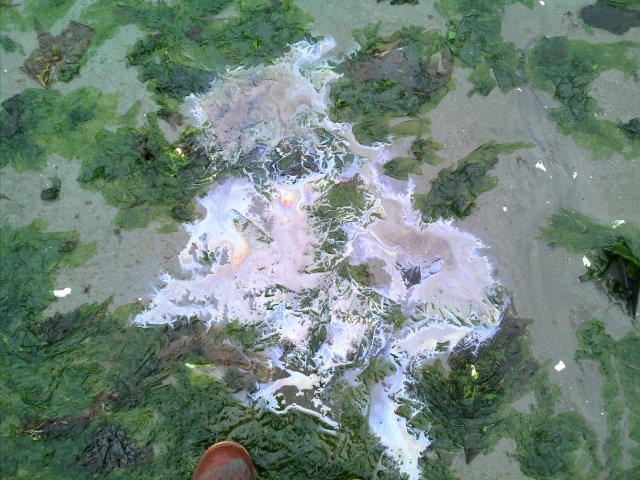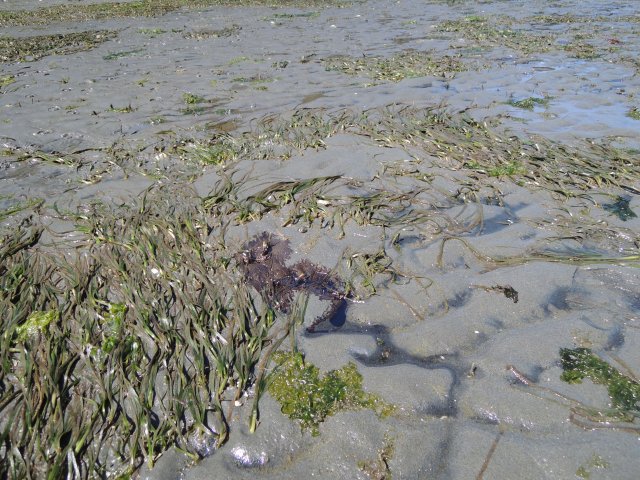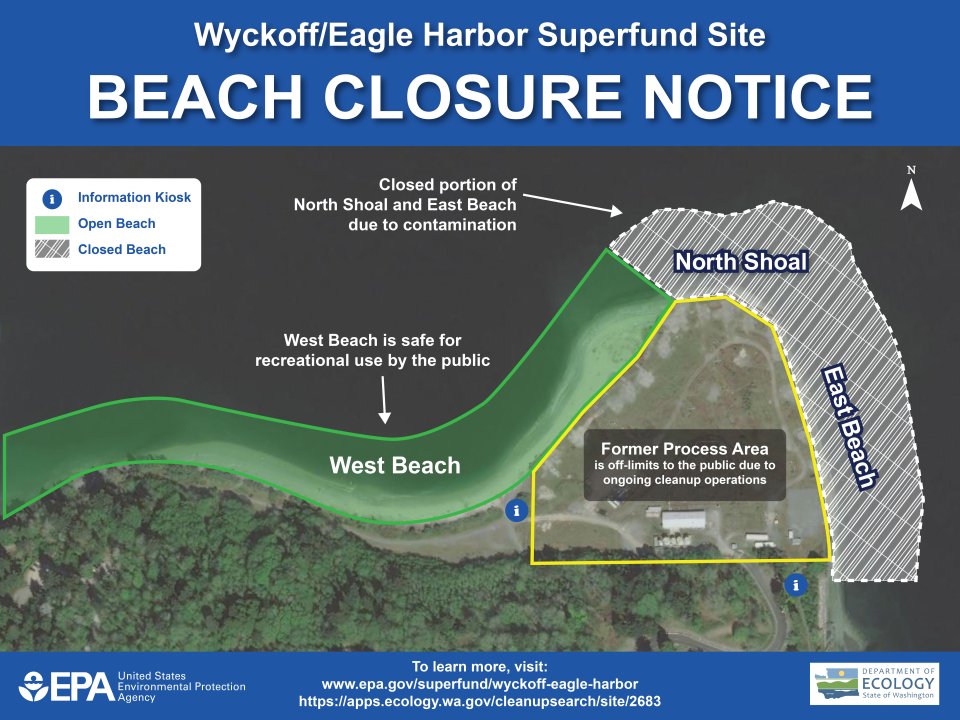Fact Sheet: Beach Contamination at East Beach and North Shoal
EPA and the Washington Department of Ecology want to remind the local community that portions of the beaches east and north of "the Point" are still contaminated.
Where is the contamination?
The East Beach and North Shoal are still contaminated (see map below).
What is the contamination and what does it look like?


The beaches are contaminated with creosote, a chemical used to treat wooden rail road ties, utility poles and pier pilings.
Creosote is an oily petroleum-based product with a distinctive odor. The creosote that remains on the beaches today is in long, thin layers. The contamination is patchy – it shows up in small spots here and there, usually during falling low tides.
Heat makes the creosote thinner, so it moves more readily. As a result, we tend to see spots of it on the beach on warm, sunny days. It looks like motor oil – brown liquid thicker than water. It almost always produces a rainbow sheen, similar to what you see when oil drips from a car onto wet pavement.
How could contaminants on the beaches affect me and my family?
On bare skin, creosote can cause chemical burns. Creosote contains polycyclic aromatic hydrocarbons (PAHs), which are chemicals found in oil, coal and tar. Some of the PAHs found in creosote can cause cancer.
Is it safe to enjoy the beaches?
Because of the risk of encountering contamination, EPA and Ecology recommend that people avoid the East Beach and North Shoal areas until they are cleaned up.
However, the West Beach area is clean and safe for public use. EPA covered contaminated sediments on West Beach with a thick engineered cap in 2008. It is important not to dig on the beach so the cap is not disturbed.
The beach area provides habitat for marine organisms, including horse clams, butter clams, geoduck, crabs, and numerous species of fish. This area is also a popular recreational area used by stand up paddle boarders, kayakers, and beach walkers. We recommend cleaning up after your pets to protect water quality.
Is it safe to swim?
It is safe to swim offshore of the facility. Contaminant concentrations in the water are well below risk thresholds.
Be careful not to wade through contaminated areas on your way in or out of the water.

